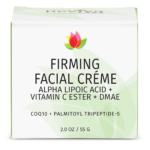Milia
Milia is a term used to describe small, white cysts that are located just beneath the skin’s surface. These cysts are often located on the face, although they can appear anywhere on the body. The cysts are filled with keratin and are generally harmless, though they may affect the appearance. It is easy to mistake these white bumps for whiteheads, which are a type of acne. Milia are painless and typically found around the eyes, nose, and cheeks.
A milium (plural milia), also called a milk spot or an oil seed,[citation needed] is a clog of the eccrine sweat gland. It is a keratin-filled cyst that can appear just under the epidermis or on the roof of the mouth. Milia are commonly associated with newborn babies, but can appear on people of all ages. They are usually found around the nose and eyes, and sometimes on the genitalia, often mistaken by those affected as warts or other sexually transmitted diseases. Milia can also be confused with stubborn whiteheads.
| Milia | |
|---|---|
 | |
| Milia on the eyelid of an adult male | |
| Specialty | Dermatology |
In children, milia often disappear within two to four weeks. For adults, they can be removed by a physician (a dermatologist has specialist knowledge in this area). A common method that a dermatologist uses to remove a milium is to nick the skin with a #11 surgical blade and then use a comedone extractor to press the cyst out.










